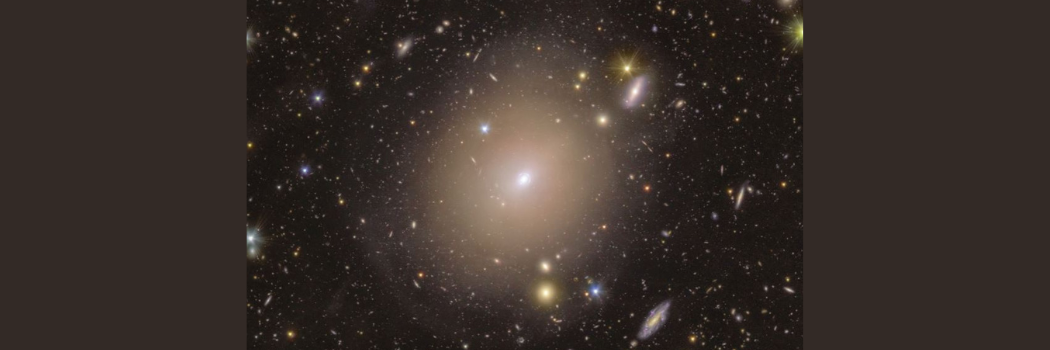
An international space mission currently mapping the dark Universe has discovered a rare 'Einstein Ring' in a galaxy not far away.
Experts from our Department of Physics are part of the European Space Agency's (ESA) Euclid space telescope project, which is mapping out the structure of the Universe across more than a third of the sky.
Scientists analysing images of space captured during an early testing phase have discovered an Einstein Ring in a galaxy called NGC 6505.
Gravitational lensing
An Einstein Ring is a rare phenomenon that occurs when a ring of light that forms when a massive object, like a galaxy cluster, bends light from a distant galaxy.
The phenomenon is caused by Gravitational Lensing - a result of Albert Einstein's theory of General Relativity which predicts that light will bend around objects in space, so that they focus the light like a giant lens.
Hiding in plain sight
This newly discovered Einstein Ring turned out to be hiding in plain sight in a galaxy called NGC 6505.
This is around 590 million light-years from Earth, a stone's throw away in cosmic terms.
However, this is the first time that the ring of light surrounding NGC 6505's centre has been detected, thanks to Euclid's high-resolution instruments.
The ring actually comes from a bright galaxy more than four times farther away than NGC 6505.
Light from the background galaxy has been distorted by NGC 6505's gravity on its way to us.
The far-away galaxy hasn't been observed before and doesn't yet have a name.
Analysing stars
Studying the gravitational effects of Einstein Rings can help us learn about the expansion of the Universe, and Euclid's images will enable researchers to analyse the stars that make up galaxies.
Our scientists are conducting further research to work out the mass of the stars and combine this with their motion to establish whether the galaxy is made of a few heavy stars or lots of lightweight ones.
Studying the gravitational effects of Einstein Rings can also help us detect the effects of invisible dark matter and dark energy, and investigate the background source whose light is bent by dark matter in between us and the source.
Main image: The ring of light surrounding the centre of the galaxy NGC 6505, captured by ESA's Euclid telescope, is a stunning example of an Einstein ring. Credit: ESA/Euclid/Euclid Consortium/NASA, image processing by J.-C. Cuillandre, T. Li






